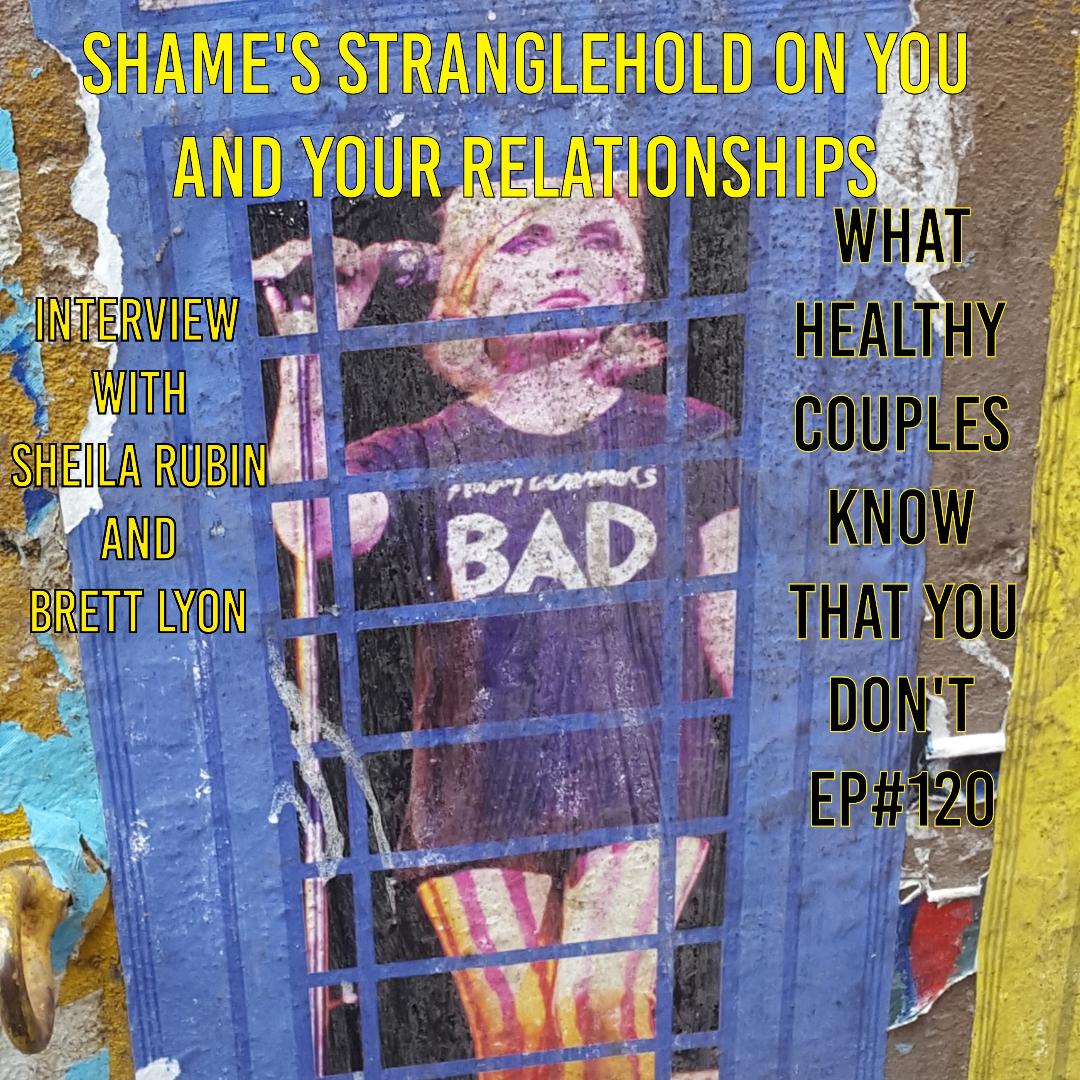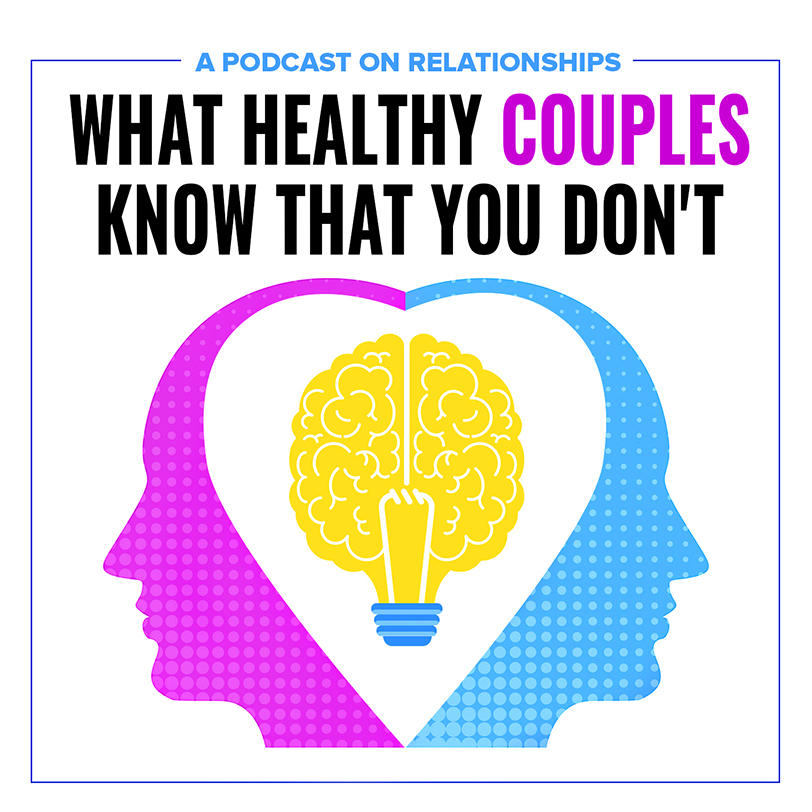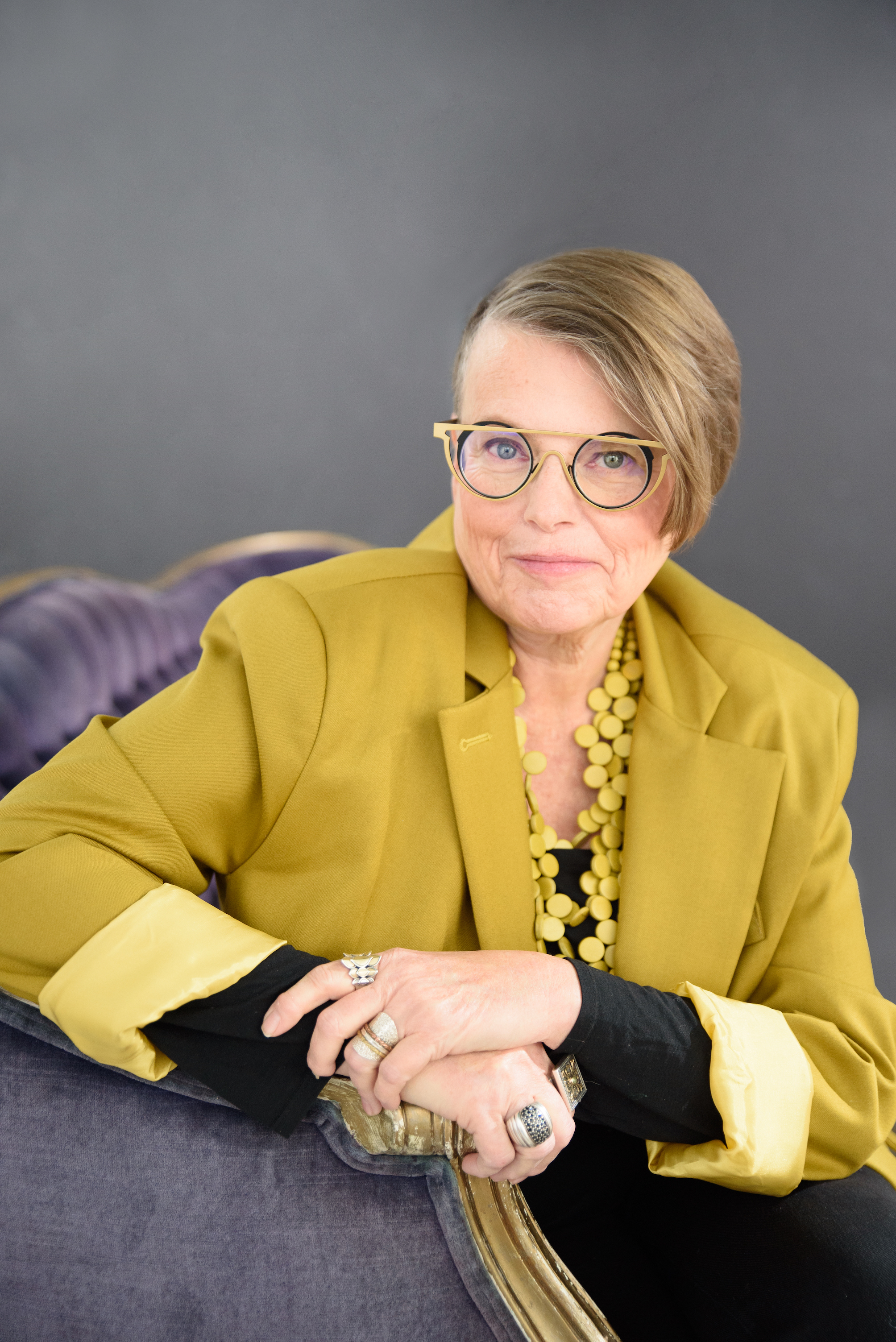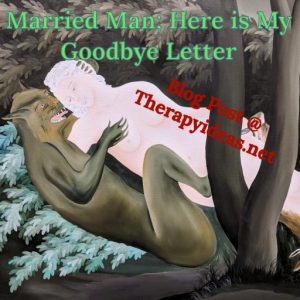Everybody can get stuck in repeating patterns of ugly disagreement. Frustrations run high & solutions seem impossible. Communication can so easily break down for so many reasons. The intensity of the unhappiness that never gets resolved leads to a familiar stickiness that neither feels able to dig out of…The good news is you can dig out!
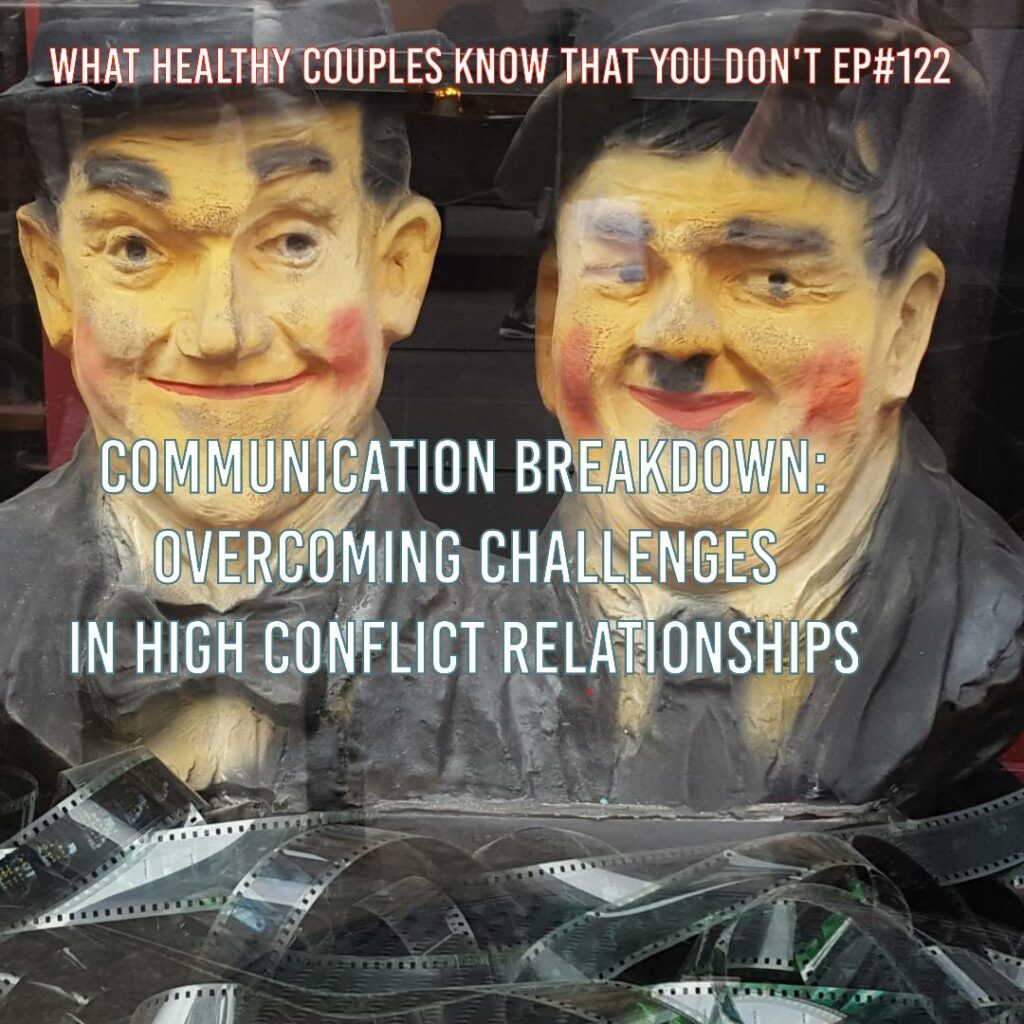
Communication Breakdown: Overcoming Challenges in High-Conflict Relationships
Everybody can get stuck in repeating patterns of ugly disagreement. Frustrations run high & solutions seem impossible. Communication can so easily break down for so many reasons. The intensity of the unhappiness that never gets resolved leads to a familiar stickiness that neither feels able to dig out of…
High conflict relationships are characterized by frequent arguments, emotional volatility, and an inability to reach resolutions. These relationships may be fueled by deep-seated issues, differing values, or unresolved conflicts that escalate over time. I believe that values collisions are rocket fuel for all ugly fighting.
Both partners are struggling to express themselves effectively or listen empathetically. Trust erodes, and the emotional atmosphere becomes charged with negativity, creating a cycle of escalating tensions. In high conflict relationships, each partner may feel misunderstood, unappreciated, or unfulfilled, further exacerbating the friction and contributing to a toxic dynamic.
The polarization of perspectives often leads to a lack of compromise or shared understanding. This ongoing clash of viewpoints can strain the emotional well-being of individuals involved, leading to feelings of isolation and frustration. High conflict relationships may also impact mental health, contributing to stress, anxiety, and even depression for those caught in the cycle of constant discord.
Fights rarely show up out of nowhere, so when they finally arrive it’s easy to start listing every single harbored resentment that ends up being such a long list that the listener gets paralyzed & floods unable to respond. This happens because we humans avoid & deflect dealing with things far too often.
Since 1979 (Raschke & Raschke) studies have shown that children in families with high marital conflict are more likely to have high levels of emotional distress. Certainly it is stressful for both partners to repeat these unsatisfying patterns.
Escalation is often something both partners contribute to. De- escalation on the other hand is a step into awkwardness & the unfamiliar. Change is really hard. Maybe just wanting the fighting to be less ugly is not enough motivation for both partners to do the work.
Todays guests to help us improve our understanding of how to get out of ugly repetitive conflict is Jennine Estes Powell, LMFT, is founder of Estes Therapy, a group practice in San Diego, CA, that concentrates on relationship counseling. As a licensed marriage and family therapist who is certified in emotionally focused therapy (EFT), she has been helping countless couples repair AND (2 for the price of one)
Jacqueline Wielick, LMFT, is a licensed marriage and family therapist and owner of her own private practice, Therapy by Jackie. Jackie previously worked at The Gottman Institute for five years, one of the world’s leading research institutes for couples and relationships, where she was exposed to their revolutionary research on love and relationships.
Together they have written a book just published in January: Help for High-Conflict Couples: Using Emotionally Focused Therapy and the Science of Attachment to Build Lasting Connection So glad you could both be here today. I want to begin by getting us all on the same page by defining what a high conflict couple is…I loved in your book that you differentiated them from normal couples because the “volume is turned up.”
Rhoda Sommer (05:18.103)
So I want to begin by getting us all on the same page by you both defining what a high conflict couple is. I loved in your book that you differentiated them from normal couples because the volume is turned up.
Jennine Estes Powell (05:38.568)
So, like you said, the volume is turned up high when we have high conflict couples. And that means a fight can come out from nowhere within it goes from zero to 60 within seconds. So we are talking about the dishes to all of a sudden, yelling, screaming, breaking things, you know, slamming doors, threatening divorce or ice cold shutdowns, right? The intense, it’s just a lot more intense.
lot quicker. They’re just like we’re just like all other couples it’s just like the volume is turned up on high.
Rhoda Sommer (06:16.215)
Did you want to add anything, Jackie? Yeah, that’s…
Jackie Wielick (06:18.093)
Yes, beautifully said. Yeah, it’s it’s it’s just really interesting. I mean, our book is for high conflict couples, but I have gotten lots of feedback that people in relationships that they would not maybe like describe as high conflict are getting benefit of it from it just because the way EFT works so beautifully is you can use the steps and stages so similarly with, you know, a not high conflict couple with as is with a high conflict because they’re so similar.
It’s just you take that, you know, stereo knob, volume knob, and you just crank it way, way, way, way, way up. So it’s really similar behaviors, maybe like shutting down or being critical or defensive, but they’re just exaggerated. Right. Mm hmm.
Rhoda Sommer (07:04.088)
Yeah, yeah. What are the three main reasons why a couple becomes a high conflict couple?
Jennine Estes Powell (07:13.771)
So we’ve talked a lot about this in the book around the, we have like, we have a lot of around trauma, having unprocessed trauma.
attachment injuries, such as an affair or someone not being there for them, right in times of need, and then ongoing unmet needs. Those are kind of the three areas that we address. But there’s also another three that cause severe high conflict couples, which is having abuse, having active addictions or having active affairs. Those are the three A’s. So it’s kind of like we have three S for sure areas where if we have
any type of abuse, addiction, affair, we will have volatility. But usually, if we have those kind of removed, because we don’t recommend that with the couples to read the book, if they have this unsafety with any type of trauma. It’s ultimately around these unmet needs ongoing repetitive nature, and that trauma that’s not processed through and these attachment injuries that aren’t repaired.
Jackie Wielick (08:23.376)
So in the first chapter of our book we kind of help readers, you know, we talked about the three A’s and we’re like, hey, if you have active affair, active addiction or actively there’s active abuse in your relationship, right? Here’s we kind of give a bit of advice on how to press pause or stop or get help or treatment for those things. And once those things are paused, right, you don’t need to be like,
fully healed from your addiction for 10 years before you can read a book. That’s not at all. But we just need to be in a place where you can absorb this information and it’s safe for the partner. Once those things are paused, then emotionally focused therapy is the best next step because there’s going to be so much disconnection in the relationship that has happened and comes from those three A’s. Then on top of that, like Janine’s saying, we have…
most often what happens is couples come in, they’re high conflict, they have no idea why they’re high conflict. They’re like, my partner just looks at me in a certain way and I feel just this like lightning bolt go through my body and I get so escalated and you just immediately want to jump in and start screaming and explaining yourself, right? And they’re like, I don’t know why. And we do these, just through exploring their history, it’s usually something in their past. Maybe there’s been some sort of trauma.
in before the relationship or in the relationship with these unmet attachment needs or betrayals, right? Affairs are only one tiny section of betrayals that can happen in a relationship, right? That has caused their nervous system to be in fight or flight and be so dysregulated, right? That it’s hard for them to stay regulated and grounded enough to keep that volume turned down in their cycle with their partners.
Rhoda Sommer (10:17.482)
I a couple where trying to figure out what the trauma was and then it emerged eventually that it was about a miscarriage that hadn’t been attended to by the husband. Yeah, and that seems like a big thing. And men are rather clueless because they don’t know what to do. But it’s something that gets harbored and resentful. Yeah.
Jackie Wielick (10:29.936)
Yes! Yes! Yes!
Jennine Estes Powell (10:31.885)
There we go.
Right? Well, and what you’re describing with the miscarriage, that’s a common area of an attachment need that it’s there’s an injury because it feels like, hey, it’s been safe, I can count on you throughout these years, I can count on you. And then all of a sudden rupture, because here’s a significant event, I needed you, I couldn’t count on you, I had to get through the distress on my own. And what I learned is it’s not safe for me to count on you. So I’m going to zip myself up, take care of myself,
Jackie Wielick (11:17.072)
Yeah.
Jennine Estes Powell (11:17.568)
And, and it’s actually a really common assessment for us as clinicians is to ask, has there ever been a time when you needed your partner and couldn’t count on them? Or was there a time that ruptured that connection? It goes from safe to all of a sudden, it’s broken. And it’s no longer safe, I can’t count on you.
Jackie Wielick (11:36.977)
Mm -hmm.
Rhoda Sommer (11:41.979)
Yeah, and that rupture, that’s a really good word. In your book, you make the observation that a common theme we notice in high -conflict couples is that each partner doesn’t seem to know how much they impact the other partner. That’s a quote. And the ability to stay regulated emotionally is missing. Could you share more about this with my audience?
Jackie Wielick (12:06.289)
I love this quote. I know exactly the point of the book that that you’re referring to with that and it warms my whole heart because it is so common that people get the message, this underlying current in their interactions with their partner that they don’t care about me. That’s the message that they’re receiving. But it’s actually usually quite the opposite. The partner cares so deeply.
That they’re responding in this way that’s quite ineffective. It’s missing the mark. That’s why they’re turning but they’re turning the volume up because They care so deeply and the other partner matters so much to them, right? So like here’s a great example because things can get really vague So we like to make it like concrete of like we have this couple who comes in we have one partner who feels like They don’t care about me at all because anytime I try to tell them how I feel
They leave, they get in the car, they slam the car door, they start to drive away and then they run in the street and start chasing the car and want to pound on the windows like, why aren’t you listening to me? Right. The message that it sends when that person is driving away, the other partner is receiving a message. You don’t care about me. But really, in fact, when we dive into the deep emotional world and needs of this person is actually they’re so distressed and so overwhelmed by feeling like they’re not good enough. Right.
and the conflict is so intolerable, they wanna do anything they can to create peace, to get the conflict to stop, even if that means like leaving, right? And so once we start to reframe the interactions of the cycle for clients to start to see that the behaviors of the other person, they actually mean like so much to them, or just communicating ineffectively, it changes the whole game. It creates a lot of empathy. Mm -hmm.
Jennine Estes Powell (13:57.807)
What?
And what Jackie’s describing is at times their distress level is so intense that they can’t track their impact and how they’re hurting the other person. They can’t track the other person’s feelings. It’s kind of like my feelings are the most intense and that’s all I can see. I think of a screen door is I can’t see past all my pain to see you. And and sometimes they do and they don’t care how it’s going to affect the other person because my pain is too intense.
Rhoda Sommer (14:29.949)
Yes, yes, I absolutely think that’s true. When partners don’t feel safe and trust is missing, how can they begin to move forward instead of repeating the same stuck cycle?
Jennine Estes Powell (14:47.216)
Well, that’s a good question. Because when we don’t have this, the safety and trust, that is the bottom line that you have to start from is how do we create that safety, right? We need safety first. So we like to talk about understanding, like that intense feeling in your body and being able to like identify like, oh, I’m wanting to zip up or I’m wanting to throw out bombs to protect myself and really
Jackie Wielick (14:57.265)
Yeah.
Jennine Estes Powell (15:17.122)
recognizing like I don’t feel safe right now how do we put words to that right and pressing pause and not going into this like the throwing of the bombs or zipping up and withdrawing and so it’s really finding a pause button and identifying like right now it feels really scary for me and right I’m I’m wanting to protect myself and just really focusing on your body because a lot of times when we’re in conflicts everybody
wants to talk about how their partner did them wrong. Right? The offense defense.
Jackie Wielick (15:48.786)
Yeah.
Rhoda Sommer (15:48.861)
Yes, yes, that’s the favorite part.
Jennine Estes Powell (15:53.329)
Right, I’m the victim and you’re the villain and that is not going to get us anywhere because it’s just going to keep us in that pattern and so we have to really press that pause button, put the spotlight on your body and identify like right now I’m starting to get worried, I’m wanting to protect myself and trying to kind of calm the body down, the nervous system because the body can be so dysregulated. So your number one job is find that pause button, regulate your body and talk about what’s going on.
Jennine Estes Powell (16:23.235)
for your side versus going into I’m the victim and here’s how you did me wrong.
Jackie Wielick (16:27.834)
Mm -hmm.
Rhoda Sommer (16:29.502)
I talk about the comfort of blame. That there’s a lot of comfort in blame.
Jackie Wielick (16:35.154)
I love that.
Jennine Estes Powell (16:37.329)
third.
It can feel so good to blame, right? It can feel great and let me tell you every move you did wrong, but it’s not going to get us out of the conflict and it’s just going to keep us wrapped up in it. And then, you know, those hours like hours and hours at night when it’s here’s what I did and here’s what you did and let me explain where you did and let’s how you know, and it’s ongoing and hours and hours and hours. So we really have to step out of that blame even though we want to. I mean, I know I want to get into it some time.
Jackie Wielick (17:05.444)
Yeah.
Jennine Estes Powell (17:08.307)
times with my wife.
Jackie Wielick (17:09.286)
100 % it feels good to be like, see I am just perfect and I’ve never… we joke about that in the book too. We’re like, we’ve made these mistakes also, you know?
Rhoda Sommer (17:23.262)
Yes, I always say I don’t do therapists as goddess. It’s not who I am. I’m just a regular person. How does attachment theory help us understand more about ourselves? Because that’s really interesting.
Jackie Wielick (17:33.006)
Yep, same.
Jackie Wielick (17:40.914)
Oh, I love talking about attachment theory because it helps us understand kind of the pattern or the cycle of interactions we can get in with our partners or clients can get in, right? We in the book, we talk about kind of the four big ones, which is anxious, avoidant, disorganized and secure. Right. So kind of simply put in that like little example we were using earlier, the anxious attachment person is going to look like the person running to chase.
their partner may be backing away or getting in the car to leave, they’re going to be yelling or criticizing or raising their voice or nitpicking or lots of explaining. But really underneath that, they’re trying really hard to feel seen and heard. An avoidant attachment person is going to do a lot of book answers or pacifying answers. They want the conflict to stop. They might, they might be the type of person to like say anything just to
get you to be okay or get off their back, or they’re gonna be the person who’s like, I’m sleeping in the other room, I’m getting a hotel tonight, I’m getting in the car. And really underneath, usually a lot of times these people feel so overwhelmed and fearful of the conflict that they’re never gonna be good enough, that they can’t get it right for their partner. And a disorganized attachment style is gonna be kind of like a combo of both. It can feel really chaotic, kind of like a, I want you close and then pushing you away.
this back and forth. And a secure attachment is what we are going for when we’re using emotionally focused therapy. And really the point of the book and all the exercises in the book are to guide people and their relationships towards creating a secure attachment. But really, I think, you know, the attachment styles are an interesting way of just understanding, oh, hey, here’s how I show up in my relationships. You know, I think it can be I think knowledge is power. I think it’s empowering and cool to know. But I like
I don’t like people to get hung up on them because they’re fluid and they can change you can change them at any time in your life So some people I think get kind of freaked out. They’re like, oh no, I tested anxious attachment We have a test in our book, but it’s like no it’s empowering because you can change it, right?
Rhoda Sommer (19:55.072)
Yeah, I think that when you identify and understand, then you can do something about it. And if you’re just swimming around in a twilight zone of confusion, you really can’t nail it down and say, OK, well, what am I going to do about this? So yeah.
Jennine Estes Powell (20:14.675)
Well, and we take attachment theory, it’s about…
having a sense it takes the phrase of it takes a village to raise a child, right? It’s like we are a community pack animal, right? We’re about community closeness connection. It’s all about getting the sense of security and a healthy type of dependency is can I count on you? Are you there for me? Right? And so we want that secure connection of feeling solid, like if I need you, you’ll show up. If I go through something distressing, I can count on you there.
Jennine Estes Powell (20:48.664)
And without those like Jackie’s talking about, there’s all of these insecure attachment styles that show up in conflict. And once we understand what’s going on underneath, right, deeper levels around just wanting that security and how we how it comes out in this like, kind of attack, withdraw chaotic type of ways, then you actually have a roadmap on okay, now how do we kind of spearheaded and take care of it?
Jackie Wielick (21:16.019)
Mm -hmm. Mm -hmm. Really at the end of the day, like as humans, right, we all just want to feel that we matter, you know, that we’re important, that our partner hears us and loves us and sees us and accepts us. And all of our behaviors and conflict, I think, are kind of just like a exaggerated, maybe like a less helpful way of getting that, getting to that.
Rhoda Sommer (21:37.697)
Yeah, that makes a lot of sense. On this podcast, there has been a lot of acknowledgement that vulnerability is crucial to building a relationship. Would you share your three -color traffic light for safety? I thought that was kind of cool.
Jennine Estes Powell (21:55.904)
Okay, so funny. I this is just how my brain works is having different
ways of breaking down relationships. And so we like to have a sense of safety with, for instance, friends is with somebody who’s green. Green is I can count on you, you’re there for me, I can go vulnerable, I can show you all my messy parts, ugly parts, anything, and it just feels safe. And I can have these raw, vulnerable conversations. Then we have those yellow people in our life. And these might be,
like the people who
you can share certain parts of your life that are vulnerable, but other parts you quite can’t. They might be a little gossipy, right? They might, you might have some people who might judge you a little bit further or get a little critical, but you know, at the end of the day, if I need you, they’ll show up for you. And your friends will show up, they’ll be there or your family, they’ll be there, but they might have some areas of, they might judge you a little bit or might get a little bit critical. Those are are yellow people. And then the reds are the danger, don’t open up, it is not safe to open up, you can’t count on them to change and if you do, you will get hurt. We need to know who those red people are in our life of to stay away or to walk delicately with. We can’t change red people. A lot of times people get into this like, I’m going to force these red people into being a yellow person in my life.
But the red peoples are reds. They can’t be safe. And so opening up your heart and going vulnerable to somebody who’s not going to handle with care and not be delicate, you need to know about that. Because yes, we want people to go vulnerable and to show kind of that rawness and draw closeness. But there are some people it is not safe and it will be used against you. So we like to have a red yellow green so you can start to look at what type of people in my life are reds.
yellows and greens? How am I showing up? Am I a red, yellow or green? Sometimes I might be a little bit more gossipy. Okay, well, I’m a yellow. How can I improve that? Right? And really looking at who’s in our life and how are we showing up around it?
Jackie Wielick (24:19.988)
Yeah. And I think it’s cool to kind of think about like in the book, we don’t want at first a really high conflict couple to just immediately go vulnerable with each other, right? Because that’s not going to be they don’t have the skills and tools like Janine is saying to handle with care. I love that. Right. It’s this fragile box. Like we need it to be, you know, wrapped with bubble wrap and all this stuff because our vulnerability is precious. So. Exactly.
Jennine Estes Powell (24:47.926)
and it will be used against you when it’s high conflict.
Jackie Wielick (24:50.844)
Mm -hmm. It’s gonna be thrown back at you, right? Right when you least need that to come back in your face and so we kind of like go through like a series of steps to create a safe place where then at a certain point in the book it is safe to be able to go vulnerable with the partner if they’ve been doing the book with each other and like we think because they have the skills and tools to know this is the vulnerability I know what to do with this. I can handle with care. I
But it takes some skills to lead up to that, right? We can’t treat everybody like a green person if we know someone’s yellow or red. You know? Uh -huh. Uh -huh.
Rhoda Sommer (25:29.763)
Yeah, it’s about being choiceful. So emotionally focused therapy or EFT techniques help couples understand what lies at the root of their emotional experiences. Learn how to initiate communication in a more effective, vulnerable way and ask for what they need clearly. It draws couples closer. So tell my audience about
Rhoda Sommer (25:58.632)
A -R -E, the three elements to build a strong foundation.
Jennine Estes Powell (26:05.59)
Yes, ARE is thank you to Sue Johnson, founder of Emotionally Focused Therapy. ARE, accessibility, responsive, and engaged. What that means is how is showing up for somebody being available.
being accessible. Can I access you when I need you? Will you be there? Will you respond to me emotionally respond to me and let me know that my emotions matter? And will you stay engaged and really kind of it’s like feeling as if somebody’s got your back no matter what. And your job is to show up and be available, accessible, emotionally responsive, engaged, right? We need to be available in that safe way. And I think of it I use in the book, well, we use
in the book, excuse me, the…
the example of a trapeze and flying trapeze and you’re going from one bar flying through the air, letting go, going to the catcher who’s swinging through the air on the other. And what we want is we want somebody to jump out and go vulnerable and take a risk and experience the other person to catch them and to show up for them and to meet the need. And so the AR is really important. And we use that a lot within our work of just how
Jennine Estes Powell (27:29.065)
Can you kind of teach that person that you are there for them? Are you accessible? Are you emotionally responsive and engaged? How are you gonna show that you’re showing up? So they don’t take a risk and then they splat on their face, right? They fall on their face. We want them to know that you’re gonna catch them.
Rhoda Sommer (27:50.629)
I really like that. I like the trapeze. Please share your ideas about the role of emotions in conflict. There was a meme that I just made and it says communication requires emotional balance. And I was thinking about the role of emotions in conflict when emotions are out of balance. What’s your advice about that?
Jackie Wielick (28:17.461)
Yes. Oh, well, what I love, one of the things I love about Emotionally Focused Therapy is they differentiate between secondary emotions and primary emotions, right? So secondary emotions, if we think of like a flower, those are the ones that maybe a rose that’s spiky, okay? Those are the ones that like our partner is going to see and experience. Usually we’re going to put those out first because they’re a little bit less vulnerable, right? Like…
frustration, annoyance, anger, resentment, jealousy, all of these things. But really what we’re trying to do in the point of healthy conflict is to get to the root. And the roots, what’s actually going on underneath those secondary emotions are what we call primary emotions. And those are the really vulnerable ones. Those are the ones that make you really go, okay, I was just like a green light person because I’m about to share this. I’m going to jump off that trapeze and I really need to make sure that person’s going to catch me. An example of those are like,
fear of losing your partner, fear that you’re not good enough for them, loneliness, sadness, feeling sad about being disconnected, wanting to feel close, right? All these really soft, juicy ones, but they’re really a lot more vulnerable. And so what we try and do is help our clients understand, usually it’s much easier for them to get to the secondary emotion first, and then we help them unpack.
what’s the primary emotion underneath that? What attachment need or attachment and security is there? And those are the ones that we want to communicate to our partners, because that’s going to be a lot safer for them to catch us if we’re at the trapeze on right there and we’re about to jump off. We should say something more vulnerable is going to make it easier for them to catch us than if we say throw out a secondary emotion, right? Yeah.
Rhoda Sommer (30:12.167)
One of the things that I have on my website for people is a feeling word vocabulary list. And I developed it back in 1980 when I was working with incest victims. And I had three by five index cards with different feeling words. And I had a stack of them. I actually kept, I had the stack for probably 30 years and then somebody didn’t give it back. But, because I used to lend it out to people.
Jackie Wielick (30:19.19)
Oh, I love that.
Jackie Wielick (30:39.294)
Aww.
Rhoda Sommer (30:39.559)
And so I felt like all those people had given some kind of energy into those cards. And so then I would have people pick four or five cards out of the pile about how they were feeling because there is often a lack of connecting with the right words. And I really, maybe because I’m a big reader, I really think precision with vocabulary and understanding there’s differences. And so…
Anyway, it’s there, two pages, anybody can print it out, you know, so it’s on the emotions page. So what are some techniques couples can use to lower the temperature on their interactions to press pause? How do we regulate ourselves during hypoarousal? And I took that word from your book because,
I thought about that’s what happens. We get kind of raw and stuck and we just dig in and make it worse. So what can we do about that?
Jackie Wielick (31:51.446)
Well, regulation is such an important part of being able to have these new interactions that we’re working on with Mostly Focused Therapy. It’s so important that we have an entire chapter called Cooling Down that’s dedicated to this. There’s so many. I mean, we could list off a million little tiny tips and tricks and things that people can do at home and there’s stuff you can do individually. But I just kind of want to share right now is because we’re talking about love, we’re talking about couples as the concept of co -regulation.
Rhoda Sommer (32:04.775)
Mmm.
Jackie Wielick (32:21.206)
which is so beautiful that because like Janine was saying, we are pack animals, it’s hardwired in our brain to have safe, close connections with other people. So the goal being at some point in this relationship as a high conflict couple that the relationship becomes safe enough where when you’re in hyper arousal, you can regulate together. You can press pause on the negative cycle that you might be stuck in with them. We can say,
hey, we’re noticing the cycles here. We’d like to do something different. If the couple feels safe, they can hold hands. They can take deep breaths together while holding hands. You can hug each other. You can do deep breathing together. But I mean, anytime I’m with couples in a session, the more I can get them to practice co -regulating, regulating their body themselves and with their partner is so, so important. But really,
the most important thing you have to do before you can do that is to notice that the interaction is going sideways and safely press pause in a way that is not blaming so you cannot say you’re doing the cycle you need to stop if we can use languages we yeah we’re in the cycle we
Jennine Estes Powell (33:34.683)
Even though we want to.
Rhoda Sommer (33:34.855)
That defeats the purpose.
Jennine Estes Powell (33:40.875)
Right, right, right.
Jackie Wielick (33:41.975)
we’re getting spun up, we’re getting the cycles taking advantage of us, right? I like to externalize the cycle because it’s separate from you, right? Pressing pause and then doing what you need to do to calm down. Maybe that’s taking a quick 30 minute break and making sure you’re coming back to the relationship. Maybe you’re taking deep breaths.
Jennine Estes Powell (34:02.171)
There’s some.
a trick that is common with children, it’s called just add water. And when children are not okay, just add water by letting them play in water, drink water, put them in the bath, do any type of activity with water, and it helps their body regulate. And at times, I like to do that with my clients as well. My just my couples of, okay, you are so angry and so upset, you’ve got to go take a cold shower and shock your system or you’ve got to
Jackie Wielick (34:06.985)
Mm -hmm.
Jennine Estes Powell (34:32.749)
to go drink some water and it helps regulate when you’re swallowing or go swim, go watch, listen to the waves crashing at the beach, we’re in San Diego or anything with water can help regulate the system at times but there’s just a lot of different strategies we put in the book and I think the biggest thing is we want to spin out of control and go oh my gosh this is gonna be the end or how
Jackie Wielick (34:49.239)
Yeah.
Jennine Estes Powell (35:02.606)
How can we be in this relationship and it gets really big and we just have to know like right now we’re in a fight, we’re in our negative cycle.
the cycle is the problem, really just identifying it as the problem. And that’s what Jackie was saying is like, this is the problem here, and we need to stop it. I like to always say, I love you, you love me, we’re gonna figure this out. Right? Because that’s the reality. I love you, you love me, we need to figure this out. Because that’s going to focus on the attachment of at least saying like, we’re going to, we don’t know it yet, we don’t have that roadmap, but we’re going to have to figure it out.
Rhoda Sommer (35:39.335)
And we might not figure it out in the next 45 minutes. My therapist would say often…
Jackie Wielick (35:39.831)
so safe.
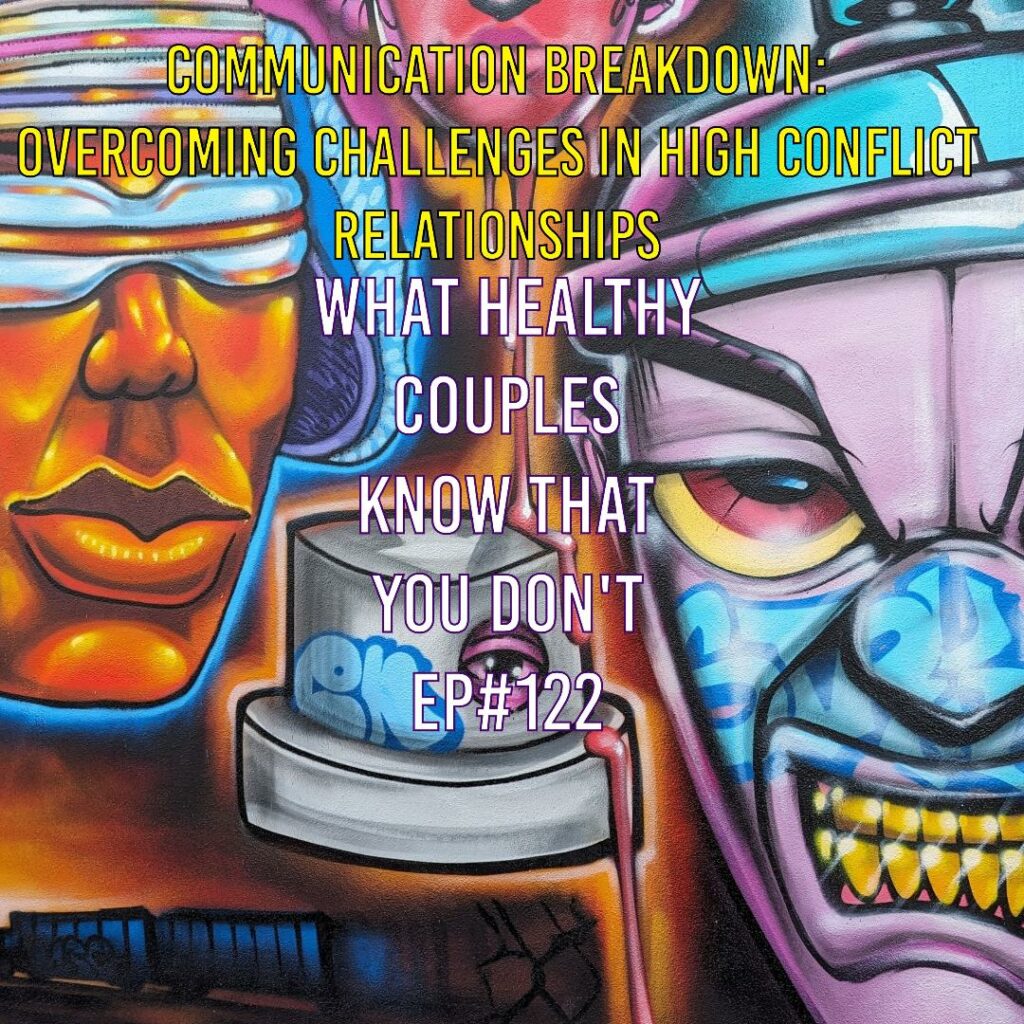
Rhoda Sommer (35:48.231)
you may need 25 to 75 conversations. And I love that idea of, you know, we always act because we’re such a frantic society that we’re gonna get this solved in three conversations. And the idea that there could be 25 conversations, because it’s the, she said, it’s the only way to soften the hard edges of differences. And so you need those conversations.
Jackie Wielick (36:14.465)
Oh, I love that.
Rhoda Sommer (36:18.087)
The more practice you get, I actually got to train with Laura Pearls and Sonia Nevis is who I’m referring to right now. But softening, like Play -Doh, I’d say when you’re in an argument, it’s that hard, you know how Play -Doh would get stuck in hard and you have to roll it around in your hands to warm it up. And that’s what 25 Conversations could do. And so just thinking, well, if you have 10 conversations, that’s
probably normal as opposed to this idea imagination we have or fantasy we have that it should be three conversations or better yet you should just know without me asking because you love me.
Jennine Estes Powell (37:00.996)
All right. Exactly. Just read my mind. You know, and what Rhoda what you’re talking about as well is
Jackie Wielick (37:01.284)
We talk about that too, yeah.
Jennine Estes Powell (37:10.971)
these couples need to have corrective experiences over and over and over and over and over. Right. And just because we had one successful talk doesn’t mean I know that I can count on you and you’ll show up and vice versa. Right. And so they do need to have that over and over. A lot of times when I’m with couples, I say give me one month to every year you’ve been together. Right? Because we’ve got we’ve got some history. So let’s not expect it to just all of a sudden,
we had one conversation, we’re done and now everything’s beautiful. And that’s what a lot of times clients want, right? Is I had the conversation, we should be good.
Rhoda Sommer (37:52.071)
I have, when I’m working with one half of a couple, I will say, go home and tell your partner that you need to practice. And they really grab on this idea of, yeah, I do need to practice, don’t I? Yeah, you didn’t ride a bike the first time with magic. You have to practice what you’ve learned. Yeah.
Jennine Estes Powell (38:10.235)
Mm hmm. Yeah, yeah. And it’s not gonna come out pretty for the first, you know, five, 10, 15 times.
Jackie Wielick (38:13.272)
Right.
Rhoda Sommer (38:18.823)
That’s right. Any help you can give us on being more self -aware of our negative repeat patterns, which we all do.
Jennine Estes Powell (38:33.917)
Yes. So the negative repeat patterns that you’re talking about is
very much a thing that all couples can typically tell you exactly who’s going to do what, right? Who does what move? Oh, I get defensive. Oh, I blame. Oh, I yell. Oh, I question. And so that pattern is such a critical one to learn how to stop, right? And the first move is really becoming the expert at the pattern, because you can’t stop something.
if you don’t understand all parts of it, so you have to really do a deep dive into what that cycle is, and who does what and what underlying emotions are there, what attachment needs are underneath it. And the more that they become the experts at it, which we have some exercises to, then we can stop it, call it out. And it only takes one person to stop a cycle. So if you think of a baby mobile, you pull on one side, the whole thing moves. So if you
Jennine Estes Powell (39:37.392)
know that you get really defensive and you want to go into explain mode to here’s why I am not the bad guy. Right? The number one thing is to then step out of that reaction, fight that urge to do that defend mode and take it, you know, press that pause button. I love pause buttons. They are so important for me. Do a deep breath.
kind of bite your tongue, count to 10, do whatever you can to say, I hear you. What you say matters. I want to hear it. And I’m fighting through my old reactions. Give me a second. Right? And so we need to actually say what we’re trying to do to get out of it. And when we’re first starting, it’s going to throw our partners off. They won’t know how to trust it right away either. Right? If…
Jennine Estes Powell (40:27.262)
you’re not defensive, then they’re like, wait, what? What are you doing? And so they might kind of jump again, not expecting it. So.
Jackie Wielick (40:33.849)
Totally and like it like you’re saying it doesn’t have to be pretty and it’s not going to be at first Like I always tell my clients like you don’t have to do emotional gymnastics, right? This doesn’t have to be therapist II You don’t have to sound like me, right? It can be I think the most beautiful ways of doing it are vulnerable and clunky But I let the essence of it is just noticing when you’re in the cycle Calling it out pressing pause in a really vulnerable non blaming way and like Janine saying make explicit what you’re doing like
I’m gonna take a deep breath. I wanna regulate my body because I love you and I want us to have this conversation. I’m feeling really triggered. Mm -hmm.
Jennine Estes Powell (41:13.919)
Yeah, and something Jackie just reminded me of is.
we want them to go vulnerable. And we want the partners to know, I’m going to do something different because you matter and really taking that risk and saying, I’m really scared. So that trapeze analogy, you’re 23 feet up on the air, you’re leaning over the edge, and you’re scared and you’re about to jump. And we need to let our partner know, I’m scared right now. But I’m going to jump because you matter. And I’m going to try to do something different. And then you got to jump.
But we got to do it in the beginning, because if the house is on fire, and you’re already during a fight, it’s really hard then to pull out vulnerability and get your partner to show up for you. It’s kind of like the house is now on fire, and it’s really hard to do it there. So it’s that initial moment, the beginning of a conversation is going to be the most critical part of catching it.
Jackie Wielick (42:11.065)
Isn’t the trapeze metaphor just the best? Like it works so well on both sides because I think and maybe this is just me but I feel like a lot of attention gets put on the partner who’s going vulnerable and like which is great we need vulnerability but it’s equally as important to talk about that person in the trapeze who’s swinging. and gonna catch that person. And it’s like, how do we set them up for success? How do we set our partners up for success so that they can catch us and have this new experience of us too? It’s 50, 50. And I think that metaphor does such a great job of highlighting the importance of both and setting both up for success. It really even just reminds me as a therapist and a person, like, you know, what it’s like to be on the other side also.
Rhoda Sommer (43:02.855)
It’s why I like the challenge of couples work, because there’s more truth in the room. And you really can see how it works together, that it’s about both people. It really is. You know?
Jennine Estes Powell (43:16.832)
Oh, I love sitting back and watching it play out for a second. Like let me watch how you to react so quick. And it’s fast. It’s fast. And that’s just all relationships, whether we’re high conflict or not, like conflict is conflict. And we were emotionally charged.
Rhoda Sommer (43:35.847)
What are our relationship insecurities?
Jackie Wielick (43:40.826)
Oh, so those are really like those underlying vulnerable feelings or needs that are underneath some of those emotions that we were talking about earlier. Yeah. Yes. And so we have so cool in the book, we list out the most common relationship insecurities and then what to do about them. And so, oh my gosh, I wish I could get out that part right now, but like common. Oh, yeah, go ahead.
Rhoda Sommer (43:49.863)
And you’ve mentioned a couple of them. Yes, I’m not good enough.
Jennine Estes Powell (44:06.24)
So that’s like the fear of abandonment, fear of not being good enough, right? Jackie was about your, like you’re saying is there’s so many of these like raw, vulnerable, like feeling insecure on where that place is in the relationship.
Jackie Wielick (44:12.642)
And what they might need from their partner or themselves to feel a little bit more secure. It’s not always the partner’s responsibility to take care of that, you know, but they can support and give reassurance. But we talk about, for example, like the person who’s fearful of abandonment making like a love box and putting in their like memories and mementos of like.
To remind themselves when they get triggered and that i’m so scared i’m going to be abandoned in place They can take that love box out and like look through it and remind themselves and calm their nervous system My partner loves me. They’re here for me. They’re fighting through this with me. They’re going to work on conflict with me. Conflict is safe Right, etc. That’s just unique to that one But you know, there’s little exercises that you can do for each attachment and security To regulate your body a little bit so you can show up differently
Rhoda Sommer (45:18.183)
Yeah, we keep talking about pausing and regulating and trying to own and understand where you are. There’s a lot of good, a lot of good information. Can one person create enough change to get the relationship unstuck?
Jennine Estes Powell (45:35.367)
Absolutely, absolutely. It takes one person to step out of that cycle. And a lot of with this book, we actually wrote it knowing that other partner may not even be willing to read the book or really do much. And so it you can change how your partner reacts by just shifting your responses. It’s incredibly hard. It sounds easy. It’s easier said than done. But it’s really, really hard, right?
Jackie Wielick (45:35.608)
Hmm?
Rhoda Sommer (46:02.023)
Doesn’t sound easy.
Jackie Wielick (46:04.41)
It’s so hard. Yep.
Jennine Estes Powell (46:05.204)
It is it is hard but it’s possible and it’s gonna require you to understand what’s going on for your body Understand what’s going on emotionally understand what’s going on? Relationally and through the history that you two have had and then learning how do I step?
you know, step out of the cycle and make a move different. So my partner doesn’t become defensive and shut down or so my partner doesn’t like there are so many things you can control. And at the same time, you can’t, you can’t stop your partner from being unavailable, right? You can’t try to get them to become available. And that’s absolutely maybe the hardest is if we have a checked out partner.
it’s incredibly distressing. Conflict goes so much higher if we have somebody who’s checked out and emotionally unavailable. And that will try to turn up the volume to be heard and or you just press pause and stay silent and it doesn’t impact your partner. And at that point, it’s going to be a bit about like, can I be okay where I’m at? And this is as far as it goes. And do I need to assess things differently?
Rhoda Sommer (47:20.295)
Okay. Any final thoughts you want to share and remind us of the title of your terrific new book and anything else you want my audience to know.
Jackie Wielick (47:28.731)
Our book is Help for High Conflict Couples. And I think the last thing that’s just on my heart that I want people to remember is just to have hope. Like we wrote this book so that people could have access to this research -based, really helpful theory at home. And you know, there’s so much research on the effectiveness of emotionally focused therapy. Over 90 % of couples who try it have success with it.
you know, a lot of couples who come into therapy actually end up feeling better on the other side of therapy than they did feel even before the conflict began. So I just think the process of using emotionally focused therapy and reading this book is a very hopeful one. So I hope that people feel like they have tips and access to this, this at home, even if they can’t afford therapy or maybe don’t know where to get access to it. Hopefully they can get access to our book.
And it is going to be available on audio book coming in March too, which is so exciting.
Rhoda Sommer (48:32.903)
Alright, thanks again to my listeners in Canada. So please keep following this podcast. I’m going to be bringing you different guests every week to give you the best information and the best help that you can get to improve your relationships. If you did enjoy this, please share it and reviews do help.



